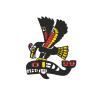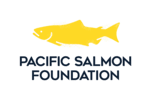Ministry of Forests, Lands and Natural Resource Operations, July 3 2015
Fishing closures part of comprehensive drought response
 VICTORIA – Responding to dry conditions, the Government of B.C. has announced a Level 4 drought rating for Vancouver Island and the Gulf Islands, and taken the additional action of suspending angling in streams and rivers throughout southern Vancouver Island and the Gulf Islands due to ongoing low stream flows and warming water temperatures.
VICTORIA – Responding to dry conditions, the Government of B.C. has announced a Level 4 drought rating for Vancouver Island and the Gulf Islands, and taken the additional action of suspending angling in streams and rivers throughout southern Vancouver Island and the Gulf Islands due to ongoing low stream flows and warming water temperatures.
At Level 4, conditions are extremely dry. Further declines in stream, lake and aquifer levels could lead to water shortages and affect people, industry such as agriculture, wildlife, and fish stocks. All water users are urged to maximize their water conservation efforts.
Effective July 4, 2015, virtually all angling in streams and rivers in Wildlife Management Units 1-1 through 1-6 is suspended. The closure has been put in place to protect fish stocks at a time when they are vulnerable due to low flows and high water temperatures. The geographic area covers Bamfield south to Victoria on the west coast, and Campbell River south to Victoria on the east coast. Key rivers affected by the order include the Caycuse, Chemainus, Cowichan, Englishman, Gordon, Little Qualicum, Nanaimo, Nitinat, Oyster, Puntledge, San Juan, Sooke, Trent and Tsable.
The Qualicum (known as “Big Qualicum”) and Quinsam rivers are the only rivers or streams in the affected area exempt from the closure. On these two streams fishing can continue as normal. These streams have sufficient water refuges to adequately protect fish, even with normal angling pressure.
The angling closure order is for southern Vancouver Island and the Gulf Islands only at this time, but B.C. government fisheries biologists are monitoring approximately 75 other key angling streams across the province, and if conditions warrant, additional closures are possible. Lake fishing is not affected by the order. Angling closures are enabled through the British Columbia Sport Fishing Regulations of the federal Fisheries Act.
Separately, the establishment of a Level 4 drought advisory, signals that regional water managers may take additional regulatory actions if they are deemed necessary. Any such actions will be site specific depending on individual stream conditions. Specific actions could include the temporary suspension of short-term water approvals or water licences in affected watersheds if necessary. Ministry water management staff will continue to monitor conditions, work closely with First Nations, local governments and key stakeholders, and provide updates as the need arises.
Although residential, agricultural and industrial users within municipalities and regional districts backed by reservoir storage are less vulnerable to water supply shortages than water users served by smaller water systems from streams, lakes and wells, all water users are encouraged to observe local water conservation bylaws to prolong water supplies and to maintain flows for fish and ecosystems.
Water users are also reminded to ensure that water intakes are screened to prevent fish from being pulled into water systems as water levels drop. Low water levels can impede the passage of salmon to spawning grounds, increase susceptibility to disease, or cause stranding or death due to low oxygen and high water temperatures.
Water conservation is everyone's responsibility. Many communities in B.C. are prepared to deal with water supply shortages and low streamflow conditions through drought management plans and water conservation programs that are already in place. In June 2015 the Province updated its 2010 Drought Response Plan.
Quote:
Steve Thomson, Minister of Forests, Lands and Natural Resource Operations –
“As we experience warmer and drier weather, it is important that we are able to react quickly to protect vulnerable fish stocks. That is what we’ve done today, and what we will continue to do in future, as conditions warrant.”
Learn More:
To see a map of the areas covered by the stream and river angling closures visit: https://www.flickr.com/gp/bcgovphotos/22aHWX
B.C. Drought Information: https://www.livingwatersmart.ca/drought/
B.C. Drought Level Map: https://bcrfc.env.gov.bc.ca/lowflow/droughtmap.htm
B.C. Drought Response Plan (June 2015): https://www.livingwatersmart.ca/drought/response.html
What Can You Do?: https://www.livingwatersmart.ca/drought/action.html
Agriculture Drought Strategies: https://www.agf.gov.bc.ca/emergency/Drought/Drought.htm
Irrigation scheduling techniques and water conservation: https://www2.gov.bc.ca/assets/gov/business/natural-resource-industries/agriculture/agriculture-documents/resource-management/factsheets-and-publications/500-series/577100-1_irrigation_scheduling_techniques.pdf
For assistance in developing an irrigation schedule: https://ag-calc.irrigationbc.com/
Stream flow and precipitation conditions in B.C. are monitored by the River Forecast Centre –
- Low streamflow bulletins and advisories: https://bcrfc.env.gov.bc.ca/lowflow/index.htm
- Current water supply bulletin: https://bcrfc.env.gov.bc.ca/bulletins/watersupply/current.htm
Groundwater levels in provincial observation wells:
https://www.env.gov.bc.ca/wsd/data_searches/obswell/map/obsWells.html
Environment Canada Water Conservation: https://www.ec.gc.ca/water/en/manage/effic/e_weff.htm
A backgrounder follows.
Media Contacts:
Greig Bethel
Media Relations
Ministry of Forests, Lands and Natural Resource Operations
250 356-5261
BACKGROUNDER
Drought: A co-ordinated cross-government response
Agricultural sector
- In partnership with Agriculture and Agri-Food Canada, the Ministry of Agriculture, has developed an Agricultural Water Demand Model to determine how much water the agriculture industry needs today and in the future for a number of regions including Nanaimo, Cowichan, Comox and Southern Gulf Islands. The model results can be used by each of the regions in developing their watershed plans and water reserves for agriculture. https://www2.gov.bc.ca/gov/content/industry/agriculture-seafood/agricultural-land-and-environment/agriculture-water
- The Ministry of Agriculture is working with the federal government and the agriculture industry to proactively plan for climate change and extreme weather conditions and that partnership has resulted in regional agriculture climate adaptation strategies for several regions of the province including the Cariboo, Peace, Okanagan-Thompson, Lower Mainland, and Cowichan Valley. https://www.bcagclimateaction.ca/regional/overview/
Water Management and the Water Sustainability Act
- When the Water Sustainability Act (WSA) comes into force next year, additional provisions will enable government to better respond to drought including:
- Modifying the current priority system of water rights to make allowances for essential household needs of up to 250 litres per person per day and the authority to temporarily regulate water use during drought to protect critical environmental flows.
- Expanding government’s ability to protect aquatic ecosystems during times of water shortage by providing the Minister the authority to issue a temporary order declaring a significant water shortage in a specific area and allowing water managers to define and protect critical environmental flow thresholds in streams.
- Enabling more complete water management by licensing groundwater use. All non-domestic groundwater users will be required to obtain a water licence. Domestic groundwater users will not be required to obtain a licence; however they will be subject to the WSA and its regulations.
Human health
- Island Health is working to promote drought emergency preparedness especially as outlined in its 2015 Drought Preparedness document for owners of small water supply systems: https://www.viha.ca/NR/rdonlyres/8530C3FF-A072-49E2-9B9F-C868A1B3EB3D/0/June292015HPESDroughtResponsePreparednesscm_nc_ce_docx.pdf
- Island Health is working with partners to promote water use restrictions under these conditions
Media Contacts:
Greig Bethel
Media Relations
Ministry of Forests, Lands and Natural Resource Operations
250 356-5261
 Email
Email



